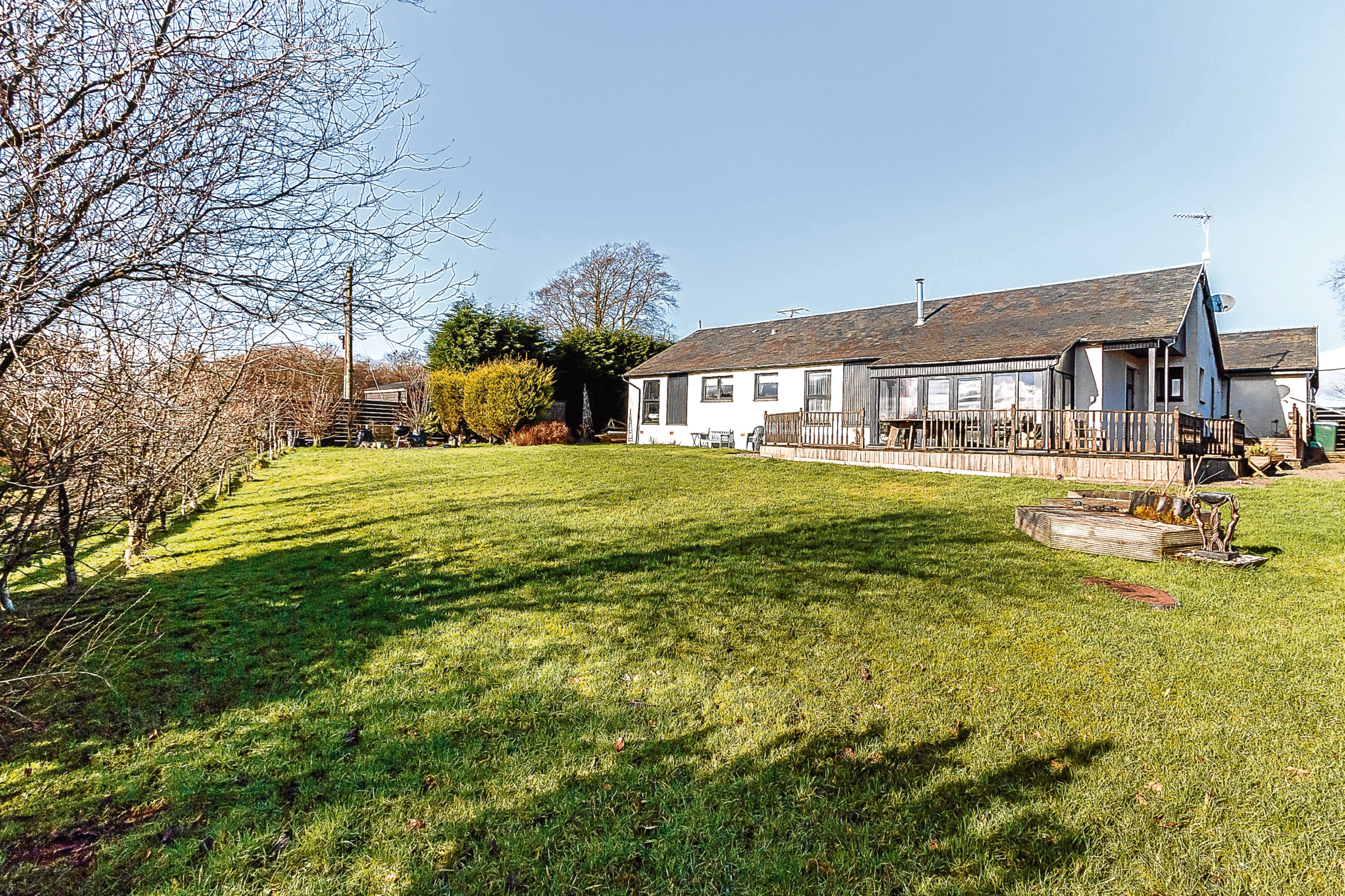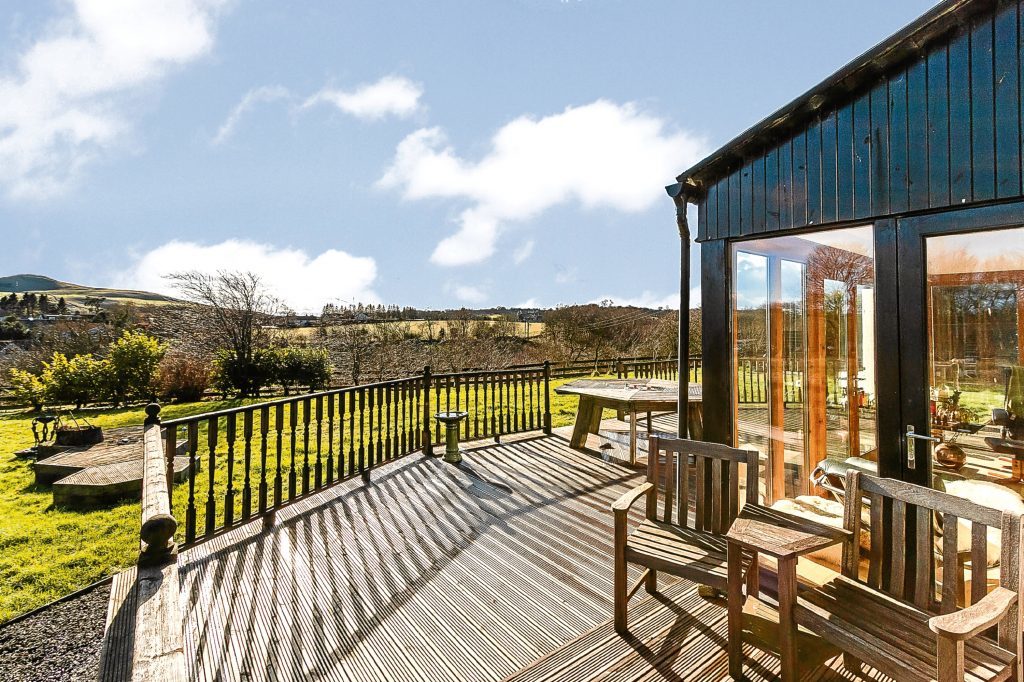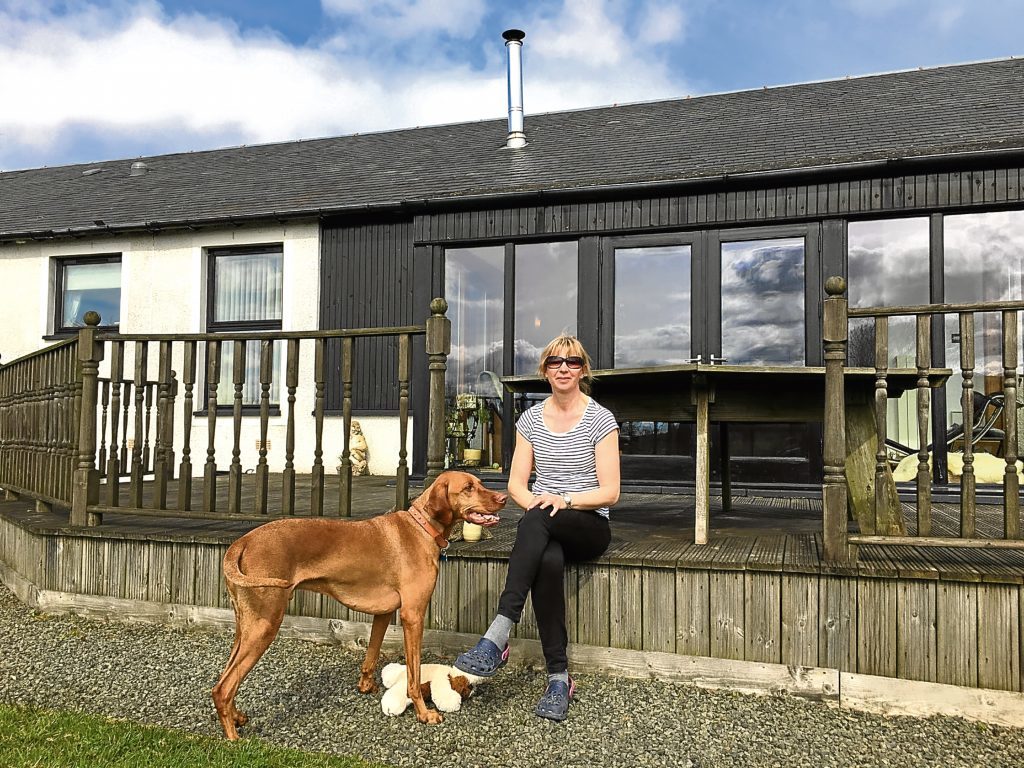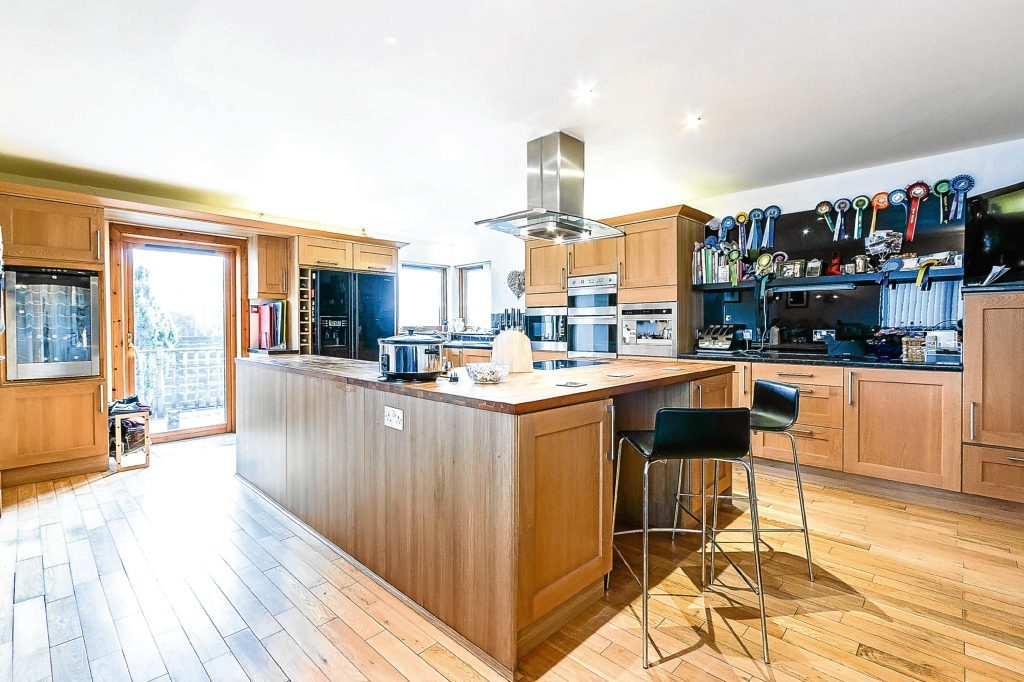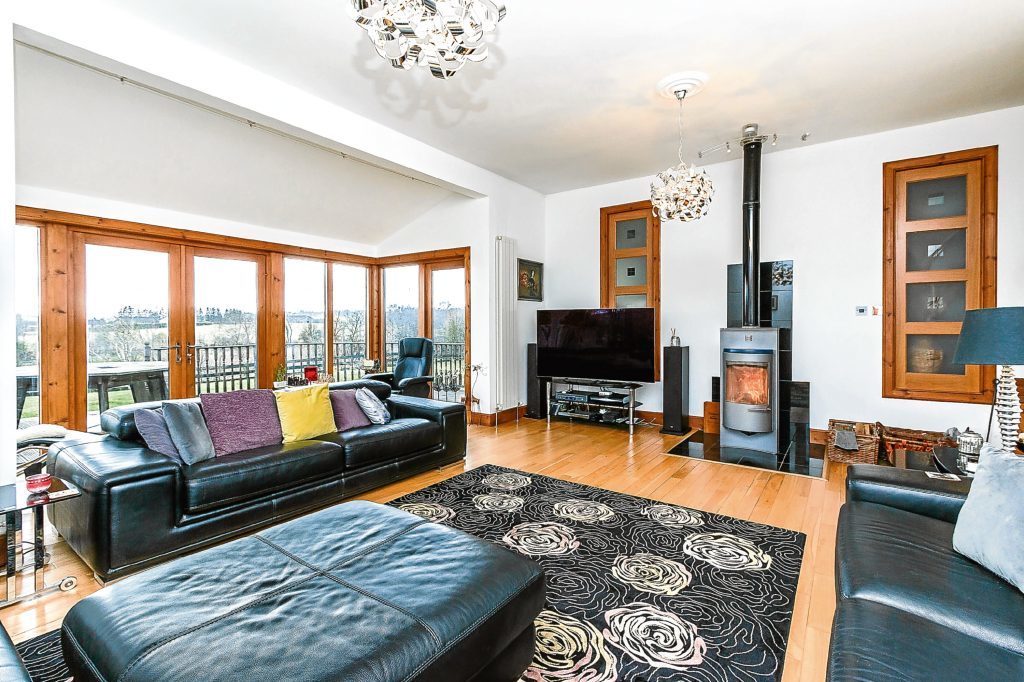Karen Heriot is very honest about her situation. “Someone like me should never have been able to live in a house like this,” she admits.
So how did the community education worker manage it?
“We self-built,” she continues. “We built our first house around 25 years ago and then we completed this one about 10 years ago.
“When we started land was much cheaper and if you build yourself you can save so much money compared to buying a house – and you can design it the way you want.”
Powmill Cottage gazes over open countryside from a farm lane near the tiny village of Rumbling Bridge in Kinross-shire.
Karen, 52, and her husband Crawford, 53, built their first house just a few hundred metres away in Powmill.
They bought a total of 11 acres from Powmill Farm and engaged Edinburgh architect Oliver Chapman to design the house. It’s a single-storey home with five bedrooms and an impressive split-level lounge.
When I arrive, Karen and her son Kyle have been doing some work in the neighbouring paddock she owns.
We go in through the garage which leads through a utility room into the kitchen. Karen’s dog, seven-year old Hungarian vizla Finn, races across the field to join us – soft toy in his mouth and his copper coat gleaming in the sunshine.
Karen says the process of self-building was stressful but worthwhile. “I project managed the build, which is a lot of work. There are so many hidden costs – who knew landscaping a garden could cost so much?
“But you can design the home you want and it will be totally unique.
Ours is south facing with big windows to let light in, and we’re not overlooked by anyone.
“Three of the bedrooms are en suite and all the rooms are a good size. You just don’t get that if you buy from a developer.”
The landscaped part of the garden is fenced off but Karen owns the stretch all the way down to the burn that can be heard babbling from where we sit on the decking.
“It would be a bit of a project but you could run the garden all the way down there if you wanted to,” she says.
The house is being sold with five acres of land, however Karen is happy to retain two acres if a buyer doesn’t want the paddock to the side.
She’s also seperately selling a development site next door which permission for five houses, each with a detached office for running a business from home.
“I’m open to selling them,” she says. “But I’d also be very willing to develop them if the right partner came along.”
It sounds like she’s got the property development bug. “It’s hard work,” she responds. “And it’s getting harder – there are new regulations all the time that make it difficult for small scale self builders.
“But it is tremenously rewarding. I don’t need a big house anymore so I’d like to build something more small scale for myself.”
jmckeown@thecourier.co.uk
Powmill Cottage is for sale through Strutt & Parker for offers over £475,000.
www.struttandparker.com
